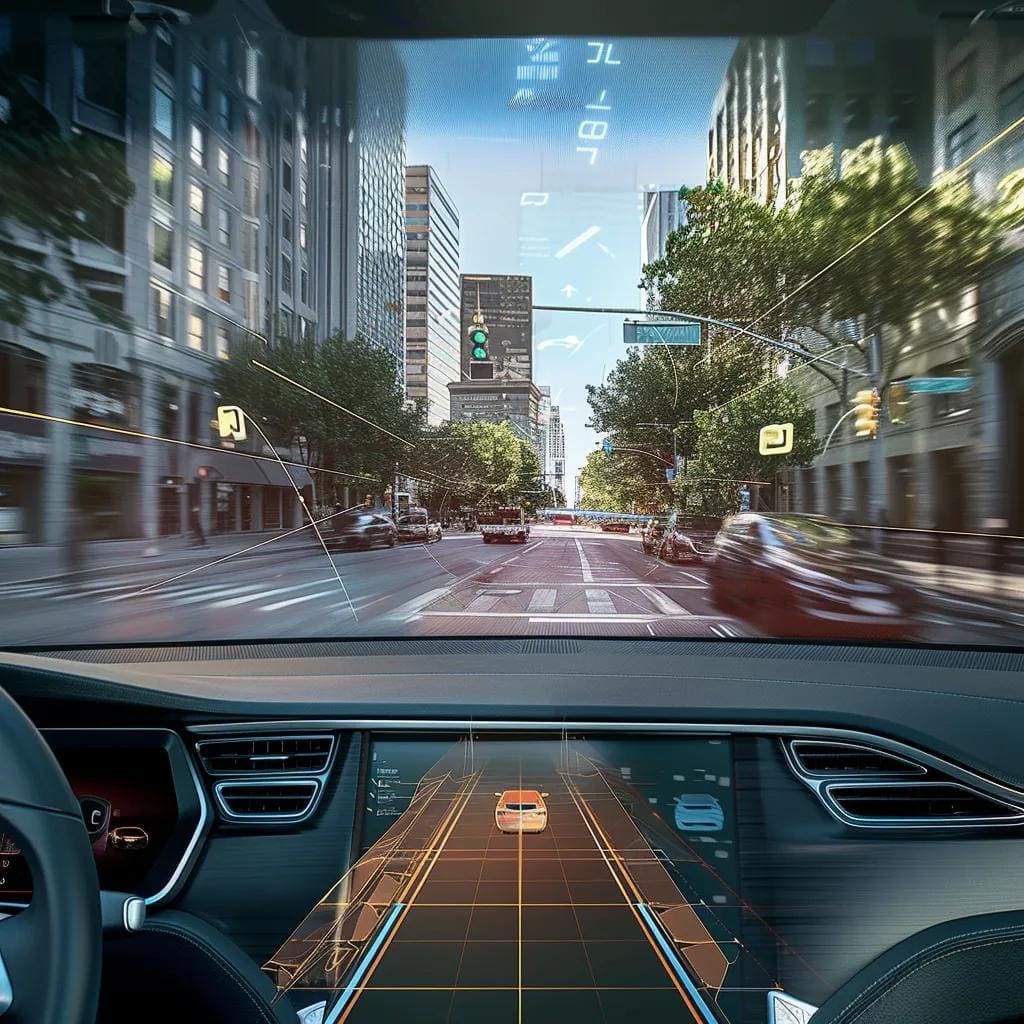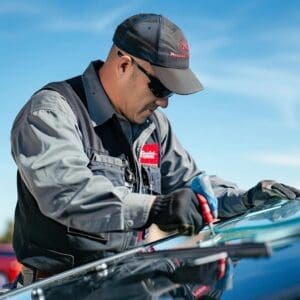
Common Signs of Windshield Calibration Failure — How to Spot ADAS Malfunctions Early
If a lane‑departure alert fires while you’re driving straight, it’s usually not the road — it’s a misaligned windshield sensor. Catching calibration problems early keeps critical ADAS features like automatic emergency braking and adaptive cruise control working as designed. This guide walks you through the most common dashboard warnings, erratic system behaviours, quick visual checks, handling clues, when recalibration is required, how misalignment affects safety systems, and the next steps to restore precision with professional ADAS calibration services in Ottawa‑Gatineau.
What Are the Most Common Warning Signs of Windshield Calibration Failure?
Calibration failure happens when your vehicle’s camera or radar drifts from OEM specifications and the system starts reading the road incorrectly. Misaligned sensors create false alerts, confuse drivers, and can change vehicle handling. Most owners notice dashboard warnings or odd system actions well before any visible damage to the glass appears.
Which Dashboard Warning Lights Indicate ADAS Calibration Issues?

If ADAS lights come on after a windshield repair, calibration is often the cause.
- Lane Departure Warning: Lights up even on straight roads when the camera misreads lane markings.
- Forward Collision Alert: Issues a false collision warning when radar alignment is off.
- General ADAS Malfunction: A generic icon that indicates a sensor diagnostic failure.
These icons usually point to an ADAS fault that may require recalibration. Spotting them early helps prevent unexpected system shutdowns and unwanted automatic braking events.
How Do Inaccurate Alerts and False Alarms Reveal Calibration Problems?
False alarms occur when miscalibrated sensors misjudge distance or lane boundaries. Common scenarios include:
- Phantom Braking — the car brakes with no obstacle present.
- Lane‑keep Warnings — alerts while you’re centered in the lane.
- Blind‑spot Alerts — warnings with no nearby vehicle.
Repeated false cues are a strong sign of miscalibration. When you notice them, arranging a proper recalibration sooner prevents further confusion and risk.
What Automated Features Malfunction When Calibration Fails?
Several ADAS functions depend on precise sensor data and will degrade if calibration drifts:
- Adaptive Cruise Control (ACC) — may not keep a safe following distance.
- Automatic Emergency Braking (AEB) — can under‑ or over‑react to hazards.
- Lane Keeping Assist (LKA) — may steer unpredictably or disengage.
Erratic behaviour in these systems signals ADAS calibration issues that affect driving assistance. Persistent anomalies mean it’s time for a professional recalibration.
How Can You Visually Detect a Misaligned Windshield Camera?
The ADAS camera usually sits behind the rearview mirror and should point straight down the vehicle’s centreline. Inspect the mounting bracket for:
- Camera tilted to one side
- Gaps between the lens housing and the windshield
- Loose or shifted attachment
A shifted camera distorts the field of view and corrupts ADAS data. A quick visual check can confirm whether the system’s “eye” has moved out of alignment.
What Vehicle Handling Changes Signal Calibration Failure?
Subtle steering pulls or uneven braking feedback can come from calibration drift. Watch for:
- Vehicle drifting toward one lane
- Uneven pedal response during emergency braking
- Steering corrections without driver input
These handling changes point to sensor misalignment and create driving instability. If you feel them, the sensors should be realigned promptly.
When Is Windshield Calibration Necessary Beyond Failure Signs?
Apart from visible faults, calibration is required any time sensor position can be disturbed. Common triggers include windshield replacement, collision repair, airbag deployment, and suspension or wheel alignment work. Proper recalibration restores ADAS accuracy and system reliability.
| Trigger | Sensor Affected | Calibration Type |
|---|---|---|
| Windshield Replacement | Front‑facing camera | Static or dynamic |
| Suspension or Alignment Change | Yaw‑rate sensors | Static |
| Collision Repair | Radar modules | Dynamic |
These events require ADAS recalibration to maintain optimal safety and avoid hidden system errors.
How Does Windshield Calibration Impact Your Vehicle’s Safety Systems?

Accurate sensor alignment ensures each safety feature interprets road data correctly. Proper calibration keeps ADAS reliable — helping prevent accidents and ensuring predictable automated responses. When sensors are out of alignment, critical functions like emergency braking and lane guidance become inconsistent.
Why Is Precise Sensor Alignment Critical for ADAS Functionality?
Cameras and radar must meet exact pitch and yaw specifications to map the road environment properly. Even a 1° tilt can shift detection zones by several metres. Correct alignment supports dependable object recognition and consistent safety interventions.
How Does Calibration Failure Increase Accident Risk?
When ADAS isn’t calibrated, braking can be delayed and lane departures can go unnoticed, undermining crash‑avoidance features. Research shows misalignment raises the chance of incorrect warnings and late emergency braking. Proper calibration improves response timing and reduces collision risk.
Impact of Misalignment on ADAS Functionality
Studies show that even small misalignments in ADAS sensors can noticeably degrade performance, producing delayed braking or false lane‑departure warnings. That weakens the effectiveness of safety features meant to prevent accidents.
National Highway Traffic Safety Administration (NHTSA), “Advanced Driver Assistance Systems: Crash Avoidance and Safety Benefits” (2023)
This research reinforces the importance of precise sensor alignment for reliable ADAS operation.
What Should You Do If You Suspect Windshield Calibration Failure?
If you notice warning lights, erratic system behaviour, or unusual handling, book a diagnostic check right away. Diagnostics identify misaligned sensors so technicians can perform targeted recalibration before safety degrades further.
Why Choose Professional ADAS Calibration Services in Ottawa-Gatineau?
Prime Auto Glass and Tint uses OEM‑approved targets and precision equipment to return sensors to factory tolerances. Our certified technicians handle both static and dynamic calibration to deliver accurate, repeatable results.
How Does Expert Calibration Restore ADAS Accuracy and Safety?
Professional calibration realigns windshield cameras and radar modules to exact angular specifications. That restores accurate distance measurement, dependable emergency braking and smooth adaptive cruise performance.
When Should You Schedule a Diagnostic or Recalibration?
Arrange recalibration after any windshield replacement, collision repair, airbag deployment or suspension work — and immediately if you notice warning signs. Prompt service prevents degraded performance and keeps your ADAS working at peak reliability.
Frequently Asked Questions
What are the potential consequences of ignoring ADAS calibration issues?
Ignoring calibration problems increases safety risk — delayed braking, incorrect lane‑departure warnings and higher crash likelihood. Ongoing misalignment can also cause more costly repairs over time. Regular checks and timely recalibration protect both safety and your wallet.
How can I find a reliable ADAS calibration service in Ottawa-Gatineau?
Look for shops with certified technicians who use OEM‑approved equipment and follow industry standards. Read customer reviews, ask for recommendations, and confirm the shop offers both static and dynamic calibration. These checks help you find a trustworthy provider in the Ottawa‑Gatineau area.
Are there any DIY methods to check for ADAS calibration issues?
You can do a few basic checks: watch for ADAS warning lights, note phantom braking or false lane alerts, and inspect the camera for tilt or gaps at the mount. For accurate diagnosis and proper recalibration, though, a professional service is recommended.
What should I expect during an ADAS calibration service?
A technician will start with a diagnostic to identify misalignment. Depending on your vehicle, they’ll perform static calibration with fixed targets or dynamic calibration that includes a controlled road test. The process includes sensor adjustments and a final verification. Service time ranges from about 30 minutes to several hours, depending on complexity.
How often should I have my ADAS calibrated?
Have ADAS recalibrated after major work — windshield replacement, collision repair or suspension adjustments — and any time warning lights or unusual behaviour appear. An annual check is a good preventive practice for many drivers.
Can weather conditions affect ADAS calibration?
Yes. Ice, snow, heavy rain, fog and extreme temperatures can obstruct sensors or affect camera visibility. Keep the windshield and sensors clean; if weather may have impacted performance, schedule a calibration check.
Why recalibrate after a windshield replacement?
OEM guidelines and industry standards require recalibration of ADAS systems after windshield replacement when sensors are involved. This ensures the continued accuracy and safety of your vehicle’s advanced driver‑assistance systems.
Society of Automotive Engineers (SAE), “Calibration Procedures for Automotive ADAS” (2022)
That SAE guidance supports our recommendation to recalibrate after windshield replacement to maintain system integrity.
Can you drive safely without proper ADAS calibration? Driving without proper calibration risks unpredictable feature failures and reduced crash‑avoidance effectiveness.
What is the difference between static and dynamic calibration? Static calibration uses fixed targets in a controlled environment; dynamic calibration uses on‑road testing to fine‑tune sensors under real‑world conditions.
Conclusion
Recognizing the signs of windshield calibration failure is essential to keeping your vehicle’s ADAS accurate and reliable. Know the warning lights, odd behaviours and handling clues so you can act early. Don’t wait for a malfunction to affect your safety — schedule a professional diagnostic today and explore our ADAS calibration services in Ottawa‑Gatineau to restore your vehicle’s precision.



